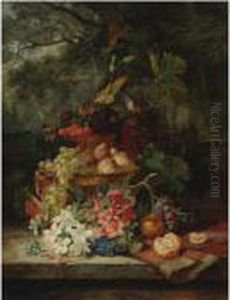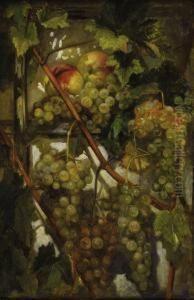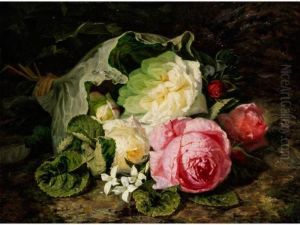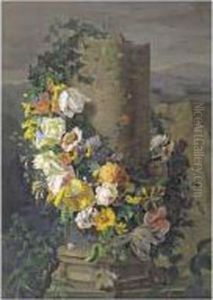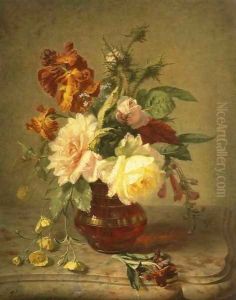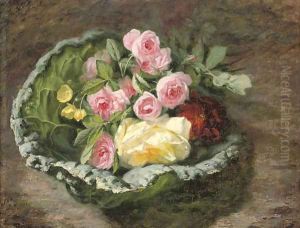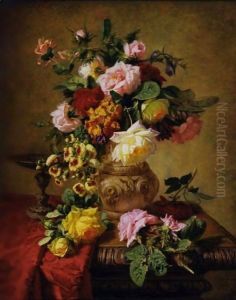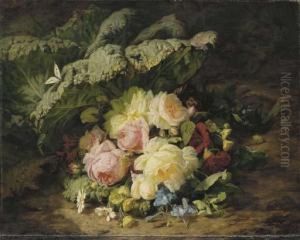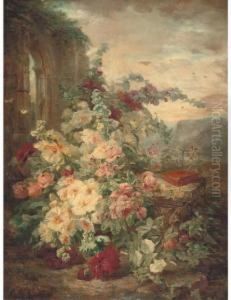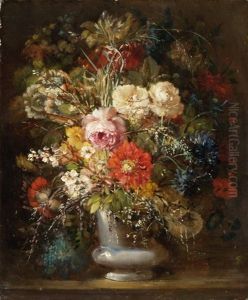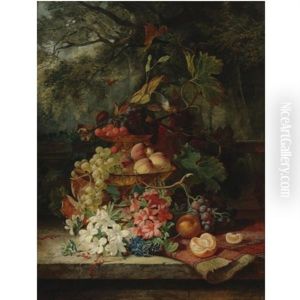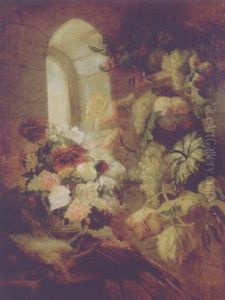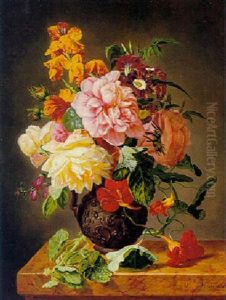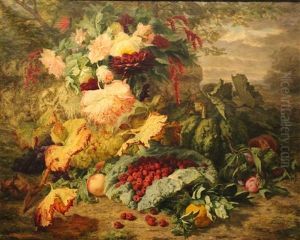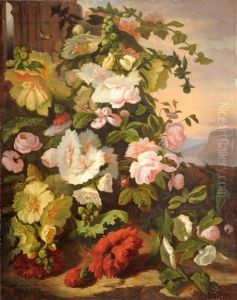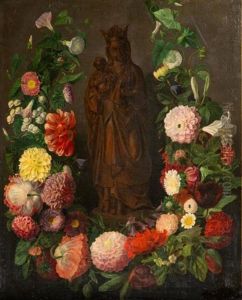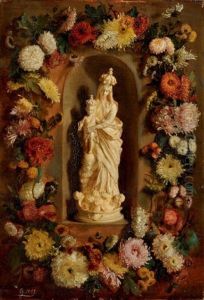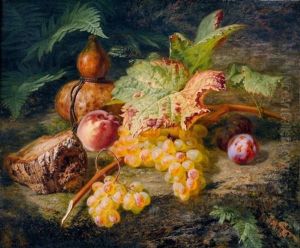Simon Saint-Jean Paintings
Simon Saint-Jean was a French painter born on July 19, 1808, in Lyon, France. He is known for his specialization in flower paintings within the 19th-century French art tradition. Saint-Jean initially trained under Antoine Berjon, who was a well-regarded still-life and flower painter of the time. Under Berjon's guidance, Saint-Jean honed his artistic skills, particularly in the accurate rendering of botanical subjects.
Saint-Jean's work often focused on the natural beauty and intricacy of flowers, bringing out their vibrant colors and delicate textures. His compositions were typically lush and dense, filled with a variety of floral species, and arranged in a way that was both aesthetically pleasing and botanically accurate. These qualities made his paintings popular among the Lyon bourgeoisie, who were his main patrons.
In 1831, Simon Saint-Jean enrolled at the École des Beaux-Arts in Lyon and later became a professor there. His teaching career enabled him to influence a new generation of artists, particularly in the realm of flower painting. Throughout his career, Saint-Jean exhibited his work in various salons and received critical acclaim. His paintings were praised for their vivid detail, rich coloring, and the lifelike presence of the flowers depicted.
Saint-Jean's success as a flower painter was partly due to the growing interest in horticulture and botany during the 19th century. This period saw an increase in the cultivation of exotic plants, and the middle and upper classes of French society developed a keen interest in floral arrangements and gardens. His artworks served as a reflection of this cultural trend, and as a result, he enjoyed considerable success during his lifetime.
The artist continued to paint and exhibit until his health began to decline. Simon Saint-Jean passed away on November 3, 1860, in Lyon. Today, his work is considered an important part of the French flower painting tradition of the 19th century and can be found in various museums and private collections. His legacy lives on as an artist who captured the transient beauty of flowers with a remarkable sense of realism and artistic finesse.

